“You’ve Got Kale!” Farming Simulation Game
A Game Teaching Farm Economics & Environmental Stewardship in a Changing Climate
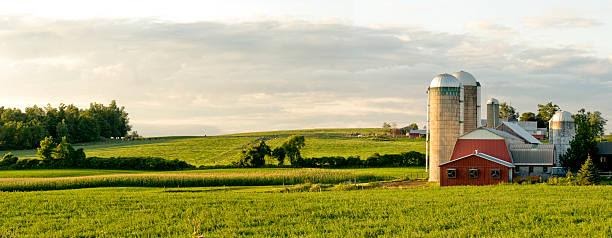
(Image from https://www.istockphoto.com/photos/dairy-farm?phrase=dairy%20farm&sort=mostpopular)
Purpose of the Simulation Game
The farming simulation game uses ecological and economic research findings to project how farm management decisions affect on-farm revenues and environmental outcomes. Throughout the game, students explore the costs and benefits of adopting nutrient management practices. Players make choices of how to maintain farm profitability while addressing goals of promoting crop drought tolerance and restoring the local stream to fishable and swimmable conditions by reducing nutrient runoff.
Introduction & Scope
In this excel game, students are vegetable (leafy greens) farmers of a 100-acre farm, in Dorchester County, on the Eastern Shore of Maryland. Not far from the farm is a stream that has high algae growth and reduced fish diversity due to excess nutrient runoff that is primarily from farms, but also comes from residential areas and roads. The community has agreed to return the stream to its previous recreational state as a neighborhood swimming area and fishing spot. The farm community (students) can restore the stream by installing enough best management practices (BMPs) as a classroom to achieve a cap on total nutrients entering the stream.
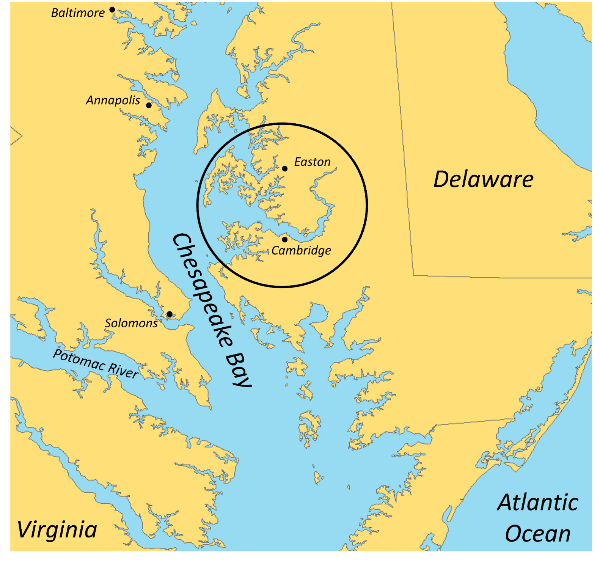
Location of farming simulation game in Dorchester County, on the Eastern Shore of Maryland (Image created in ArcMap).
By implementing BMPs, nutrient runoff from your farm will decrease and you will earn Environmental Stewardship Points. If you earn at least 80 points per year, you will be labeled as an "Environmental Steward," and be able to sell your crops at a higher price per bushel.
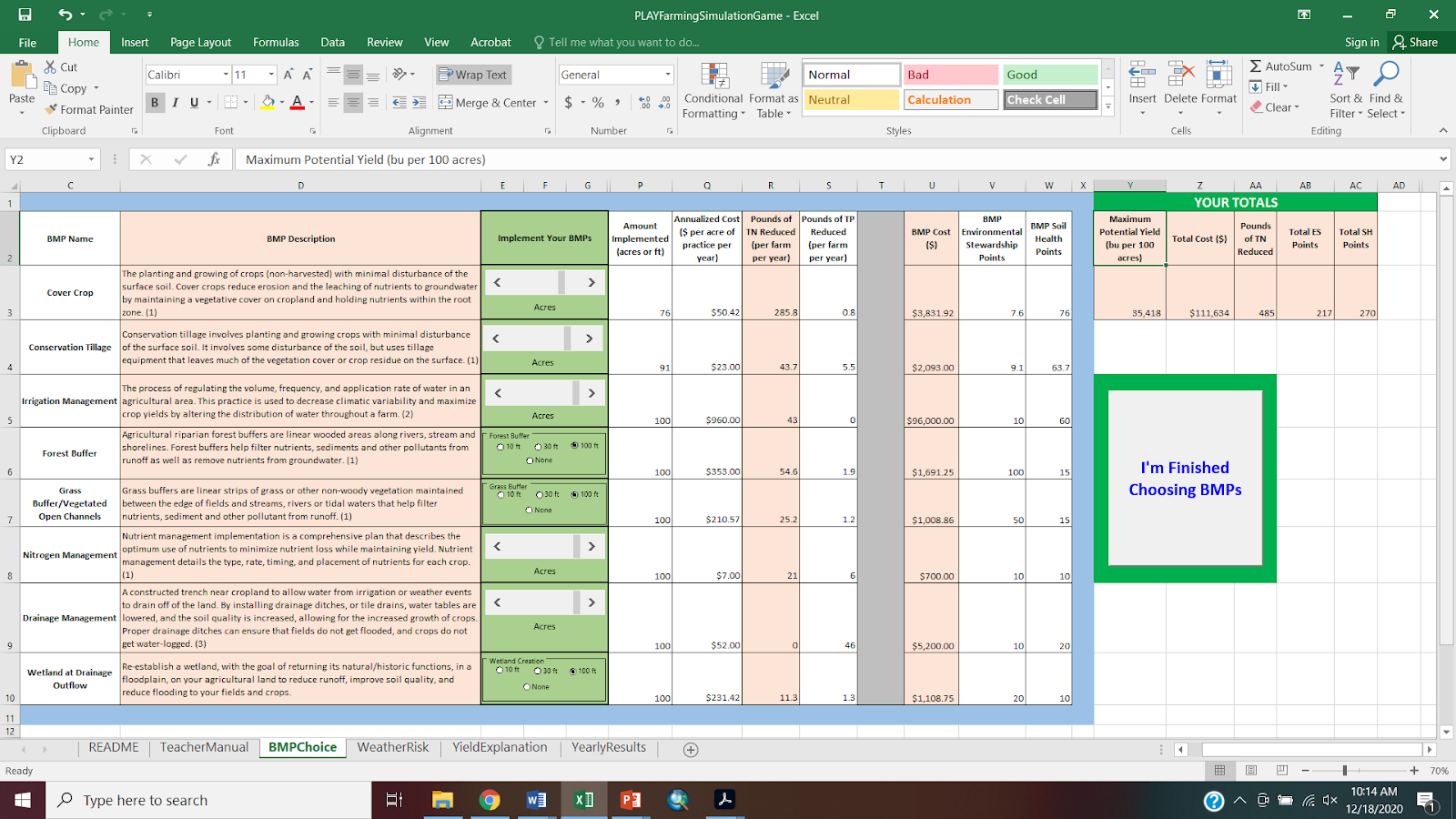
Choose your BMP & implementation amount screenshot (from “You’ve Got Kale!” farming simulation game).
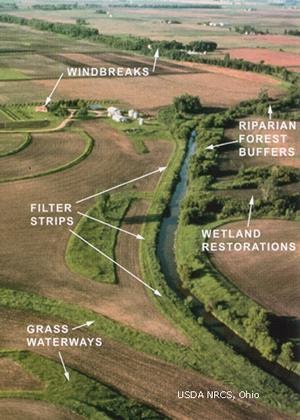
Examples of BMPs used on farmland (from https://cedarspringspost.com/2018/12/13/new-funding-for-farmers-and-forestland-owners/)
BEWARE: Random weather events, such as drought, can reduce your crop yield below your expected level. You can reduce the effect of drought by installing BMPs that increase soil carbon and soil health, as measured with Soil Health Points. The more points you have, the lower the impact of drought on your crop yields.
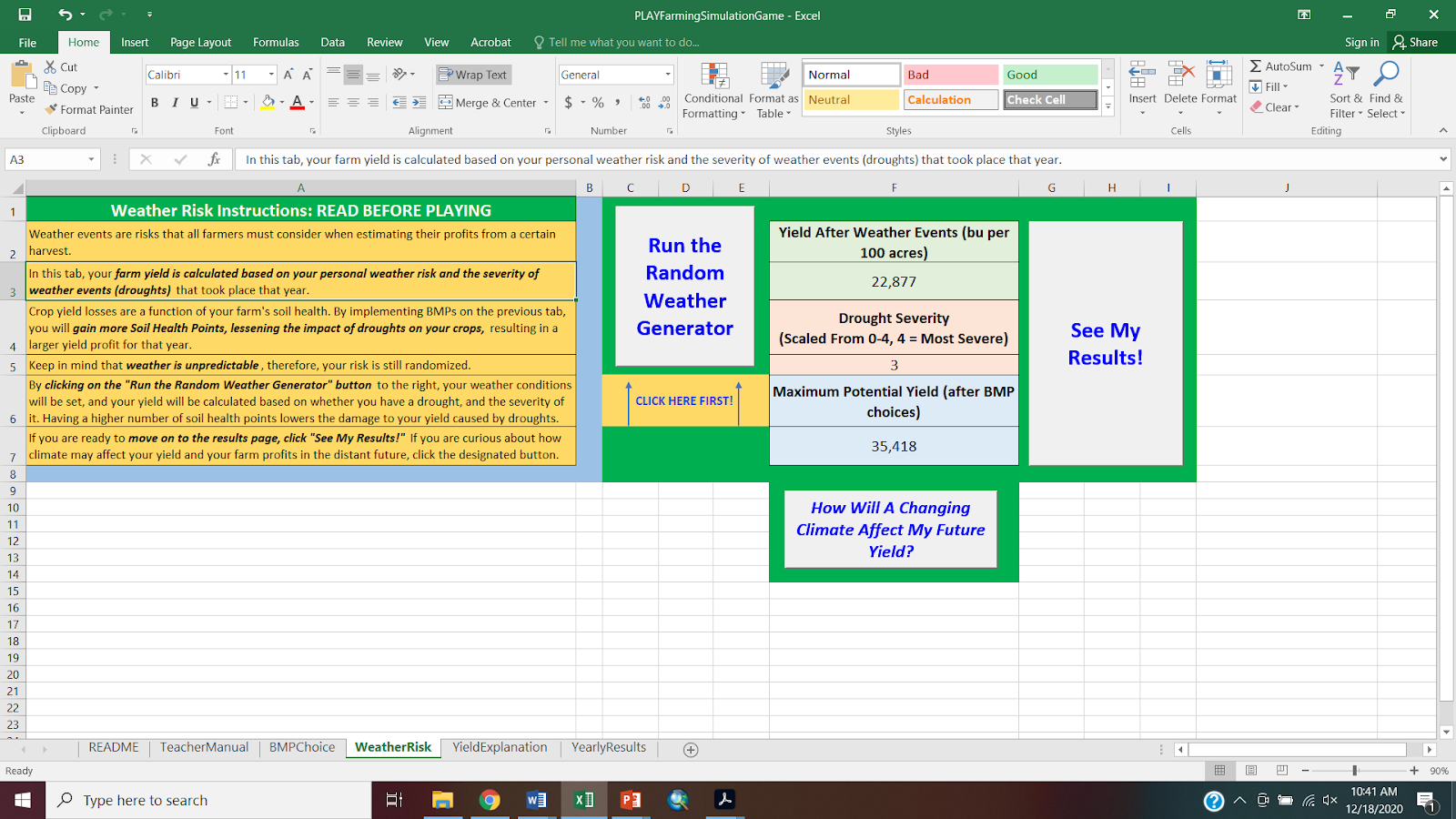
Screenshot of the weather generator tells students how much weather impacted their crop yield for that year (from “You’ve Got Kale!” farming simulation game).
You can opt to receive government payments (cost share) to offset 50% of the cost of implementing the more expensive BMPs.



